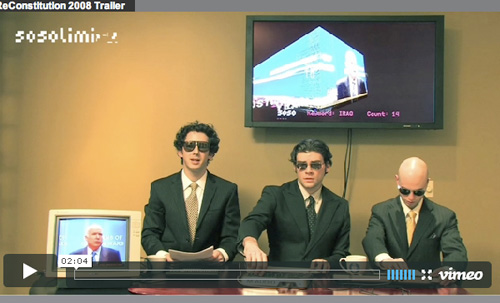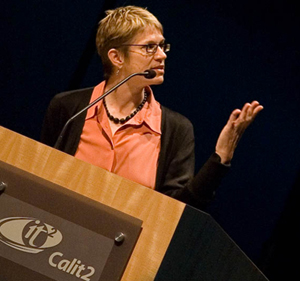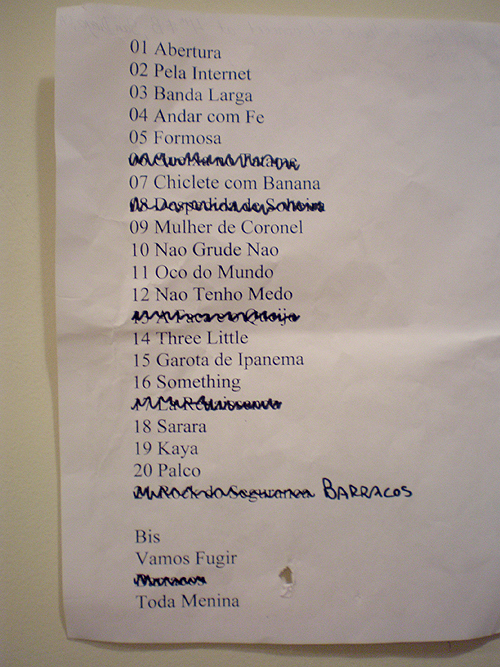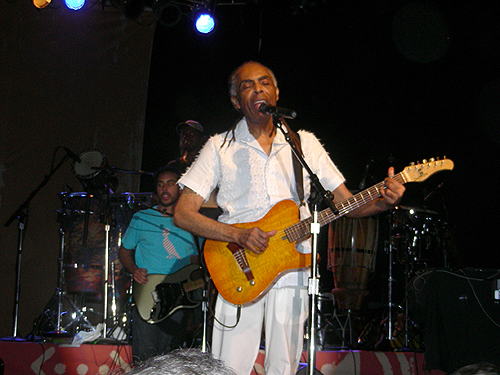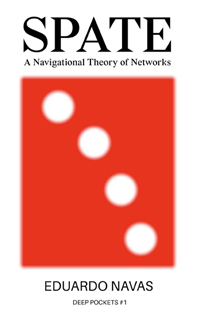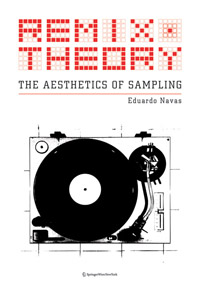Scalable City: Interview with Sheldon Brown, by Eduardo Navas
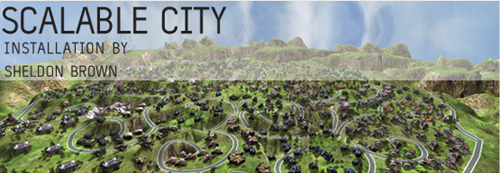
Image and text source: gallery@calit2
The following interview with Sheldon Brown was commissioned by gallery@calit2 for the exhibition “Scalable City”. Exhibition dates: Thursday, Oct. 23, 2008 – Monday, Dec. 15, 2008
Sheldon Brown is an artist who works in new forms of culture that arise out of developments in computing technology. He is Director of the Center for Research in Computing and the Arts (CRCA) at UC San Diego, where he is a Professor of Visual Arts and an academic participant in the California Institute for Telecommunications and Information Technology (Calit2). During his early career, Brown experimented with emerging technologies to develop works that explore the possible meaning of “virtual reality.” His installations were often designed for immersive audience participation. Many of these works have been developed for the gallery, such as “MetaStasis” (1990), an art installation consisting of a room that visitors enter to experience what appears to be, as Brown himself has called it, a “zoetrope of TV images.” Brown took his interest in mediated reality to the public sphere in installations such as “Video Wind Chimes” (1994), which projects broadcast TV images on the street sidewalk – images selected according to how the wind blows. In both of these projects, as well as many others, Brown emphasizes how metaphysical experience is contingent upon our increasing dependency in immersive media of all forms. Brown’s longstanding interest in mediation is further explored in “Scalable City.” In the following interview, the artist reflects on how Scalable City connects his interests in emerging technologies as well as longstanding traditions of art practice.
[Eduardo Navas] Unlike many artists who claim to be interested primarily in expressing their ideas and not being bound to a specific medium, you have chosen to focus on the development of art that is involved with computing technology. Having said this, the computer makes possible metamedia – meaning it simulates other media, and in this sense it allows artists to focus on idea development. It appears, then, that you share the interest of exploring ideas in the tradition of modern art practice with artists who might play down their preference for a particular medium. With this in mind, could you reflect on the shifts that art practice may be taking based on the increasing role of computers in all aspects of our lives? How do you see your art practice in relation to previous practices which may have downplayed their preference for a particular medium?
[Sheldon Brown] It seems you attribute conflicting claims for my relationship to “medium”, but I don’t see computing as a medium in the 20th century sense. Probably even the idea of it as a meta-medium does not capture its character. It may be more useful to think about computing as creating certain cultural conditions, and I’m doing work which utilizes and responds to those conditions. It might then be more like the interest in speed as a condition for the futurists, but I wouldn’t want to make too much of any analogies to previous art movements and their concerns. The impact of computing on culture comes after the modernist, conceptualist and post-modernist engagements, and just as I have called it a meta-medium, I could also call it a meta-ism – it is able to simulate any and all of these previous attitudes. Not that my interests in this begin and end at simulation of previous forms; this is but one of the gestures possible in this condition, but when it performs any of these simulations, they become rapidly engaged in a new dynamic which doesn’t stop at borders of previous operations.
(more…)




